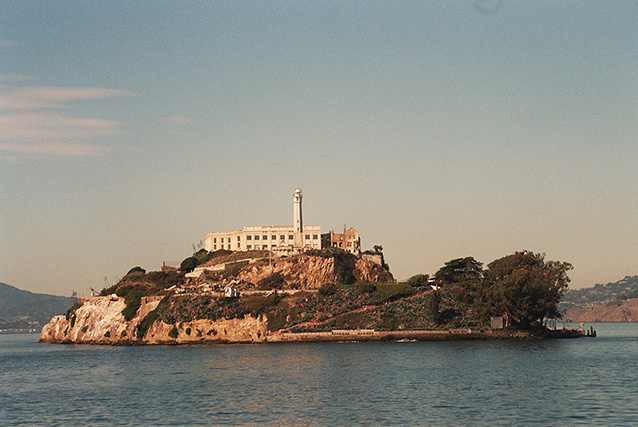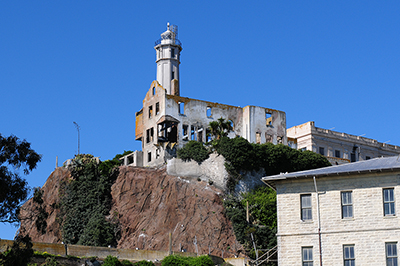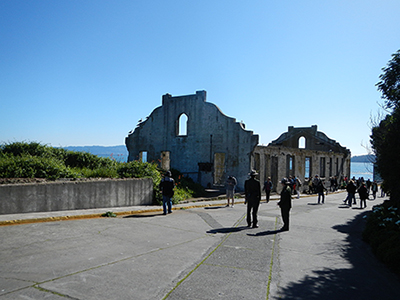Alcatraz Island is a 22.5 acre historic designed landscape in San Francisco Bay. Alcatraz Island occupies a commanding position nearly four miles directly east of the bay's entrance. Fog and high winds frequently pour in from the Pacific Ocean to buffet the island. Cliffs rising as high as 50 feet ring the island. The bare rock of the island is today covered by a thin layer of imported soil and vegetation and dotted with structures associated with the island’s military and prison history.

NPS

NPS
The site of the first lighthouse on the Pacific Coast (1854), Alcatraz Island served as a Civil War bastion and became the nation's first official army prison. "Uncle Sam's Devil's Island," as it was known, was transferred to civilian authority in 1934, and became infamous as a place of incarceration for the nation's most hardened criminals. The prison closed in 1963, and ten years later the island reopened to the public as the first unit of the Golden Gate National Recreation Area.
During the mid-nineteenth century, Alcatraz Island served as an impressive fortress. Along with Fort Point and, later, Angel Island, it guarded the entrance to San Francisco Bay.
As a fortress, Alcatraz was nearly as impregnable as technology of the time could make it – an “American Gibraltar” – and it was crowned with a brick/masonry Citadel. As a Federal prison, it housed dangerous criminals, most of those whom it was believed were too unmanageable for incarceration in other Federal prisons.

NPS
Alcatraz Island has been the site of significant historic events that have impacted the entire nation, from before the Civil War through an Indian Occupation of the 1970s. The first U.S. lighthouse on the Pacific Coast, built here in 1854, aided maritime commerce. At the start of the Civil War, Alcatraz served as the key fort in the center of the most important Pacific port in nineteenth-century America, mounted the first permanent cannons on the West Coast, and featured a brick and masonry defensive barracks that was particularly notable in the annals of American military architecture.
In the areas of military and social history, Alcatraz is noteworthy as the first army prison in the nation. When it became a civilian penitentiary in 1934, Alcatraz quickly gained attention due to its association with many of the most infamous criminals of the gangster era and the bloody escape attempts made from there. It is representative of the far end of the penological spectrum, since it was a prison designed for punishment and incarceration only, rather than rehabilitation. It is of national importance in this regard because of its role in the Federal prison system as a repository of incorrigibles.
The period of significance begins in 1847, when the island was first surveyed for the military fortifications, and ends in 1971, when the NPS acquired the island. This period of significance covers the military fortifications period (1847-1907), the military prison period (1907-1933), the federal prison period (1933-1963), and the public lands period (1963-1971). The current landscape of Alcatraz Island includes landscape characteristics and features that date from each historic period.
Quick Facts
- Cultural Landscape Type: Historic Site
- National Register Significance Level: National
- National Register Significance Criteria: A
- National Historic Landmark
- Period of Significance: 1847-1971
Landscape Links
Last updated: January 18, 2024
